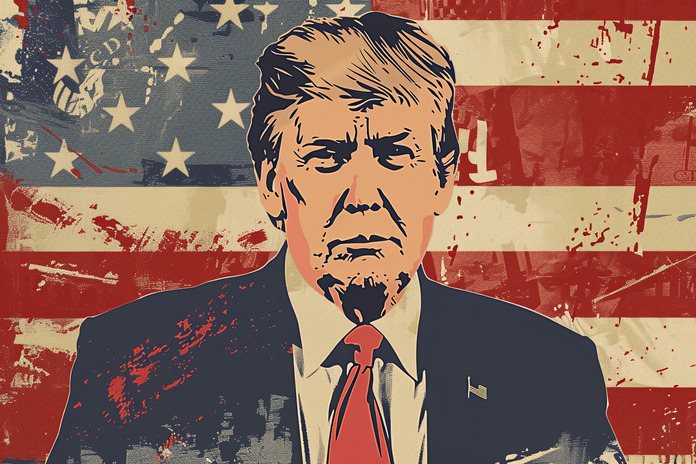This post was originally published on this site
Strategically, the Blockchain As A Service (BaaS) market presents strong growth potential, especially in regions like North America with mature digital infrastructure and regulatory support. Market entry should prioritize sectors like finance, supply chain, and healthcare, where blockchain adoption is accelerating. However, high implementation costs and regulatory uncertainty require careful risk assessment and strategic partnerships. Firms should offer scalable, compliant, and cost-efficient BaaS solutions, while investing in customer education and technical support to overcome integration challenges and capitalize on long-term enterprise adoption trends.
LEWES, Del., May 2, 2025 /PRNewswire/ — The Global Blockchain As A Service Market Size is projected to grow at a CAGR of 71.20% from 2024 to 2031, according to a new report published by Verified Market Research®. The report reveals that the market was valued at USD 47.93 Billion in 2024 and is expected to reach USD 347.25 Billion by the end of the forecast period.
The Blockchain As A Service Market is evolving rapidly, fueled by adoption in BFSI, healthcare, and supply chain sectors. Enterprises are leveraging BaaS for improved traceability, security, and data integrity. The market shows strong potential amid growing digitization trends.
Key Highlights of the Report:
- Market Size & Forecast: Valuation, CAGR, and projected market size from 2024 to 2031
- Technological trends shaping the BaaS ecosystem
- Competitive Landscape: In-depth profiling of major players, including their strategies, innovations, and market positioning.
- Regional dominance and emerging markets outlook
- Regulatory and policy impact analysis
- SWOT and Porter’s Five Forces analysis
Why This Report Matters:
This report delivers actionable insights into a rapidly evolving market where blockchain is transforming business models. It empowers decision-makers with data-driven forecasts, competitive intelligence, and technology trends to stay ahead of industry shifts.
Who You Should Read This Report:
- C-level executives and enterprise IT leaders exploring blockchain integration
- Investors and VCs focused on emerging tech ecosystems
- B2B service providers and technology consultants
- Supply chain and finance professionals aiming for operational transparency
- Government bodies and regulators evaluating blockchain policies
For more information or to purchase the report, please contact us at: https://www.verifiedmarketresearch.com/download-sample?rid=10565
Browse in-depth TOC on “Global Blockchain As A Service Market Size“
202 – Pages
126 – Tables
37 – Figures
Report Scope
|
REPORT ATTRIBUTES
|
DETAILS
|
|
STUDY PERIOD
|
2021-2031
|
|
GROWTH RATE
|
CAGR of ~71.20% from 2024 to 2031
|
|
BASE YEAR FOR VALUATION
|
2024
|
|
HISTORICAL PERIOD
|
2021-2023
|
|
FORECAST PERIOD
|
2024-2031
|
|
QUANTITATIVE UNITS
|
Value in USD Billion
|
|
REPORT COVERAGE
|
Historical and Forecast Revenue Forecast, Historical and Forecast Volume, Growth Factors, Trends, Competitive Landscape, Key Players, Segmentation Analysis
|
|
SEGMENTS COVERED
|
- Component
- Business Application
- Vertical
|
|
REGIONS COVERED
|
- North America
- Europe
- Asia Pacific
- Latin America
- Middle East & Africa
|
|
KEY PLAYERS
|
IBM Corporation, Microsoft Corporation, SAP SE, Amazon Web Services, Oracle Corporation, Accenture PLC, Deloitte Touche Tohmatsu Limited, Cognizant, Infosys Limited, Capgemini SE, NTT Data Corporation, Huawei Technologies Co. Ltd, HPE, Baidu, Inc., Tata Consultancy Services Limited, KPMG, Wipro Limited
|
|
CUSTOMIZATION
|
Report customization along with purchase available upon request
|
Global Blockchain As A Service Market Overview
Market Driver
Surge in Enterprise Demand for Secure Digital Transactions: As cyber risks advance, organizations are transitioning to decentralized architectures to safeguard sensitive data and preserve transaction integrity. Blockchain as a Service (BaaS) provides strong cryptographic security and audit capabilities, minimizing fraud and illegal access. Entities within the BFSI, legal, and healthcare sectors are implementing BaaS to enhance verification procedures, mitigate operational risks, and bolster trust among stakeholders.
Increasing Adoption in Supply Chain and Logistics: Blockchain facilitates real-time asset monitoring, provenance verification, and immutable recording—essential requirements for contemporary supply chains. Logistics firms, manufacturers, and retailers are integrating BaaS platforms to assure compliance, mitigate counterfeit concerns, and improve supplier transparency. Due to increasing ESG and traceability demands, companies are investing in BaaS to digitally transform their comprehensive supply networks.
Growth of Smart Contracts and Decentralized Applications (dApps): Smart contracts are transforming enterprise automation by eliminating the necessity for third-party validation in contractual processes. Blockchain-as-a-Service (BaaS) solutions empower enterprises to construct, implement, and oversee smart contracts on scalable blockchain networks without necessitating internal blockchain infrastructure. Industries such as insurance, finance, and energy are adopting BaaS to mitigate delays, enforce contractual commitments, and diminish disputes through self-executing protocols.
To Purchase a Comprehensive Report Analysis: https://www.verifiedmarketresearch.com/select-licence?rid=10565
Market Restraint
Regulatory Uncertainty and Compliance Challenges: The international blockchain regulatory framework is disjointed and continues to develop. Businesses encounter uncertainty around the alignment of blockchain transactions, smart contracts, and digital identities with local compliance regulations, including GDPR, HIPAA, and financial reporting standards. The intricate regulatory landscape, especially for cross-border operations, obstructs comprehensive BaaS implementations and introduces legal and reputational risks.
High Implementation and Integration Costs: While BaaS diminishes the price associated with constructing blockchain infrastructure from the ground up, overall implementation costs might be considerable. Organizations must allocate resources for customisation, user training, legacy system integration, and post-deployment maintenance. For SMEs, the initial and recurring expenses remain high, deterring adoption despite the technology’s promise for long-term ROI.
Limited Availability of Blockchain Expertise: Blockchain continues to be a specialized competency inside the global labor market. Many firms lack the internal technical expertise necessary to efficiently implement, scale, and secure BaaS infrastructures. The learning curve related to distributed ledger technologies, consensus processes, and smart contract programming hinders implementation deadlines. This skills deficit increases dependence on external consultants and impedes innovation cycles.
Geographical Dominance
North America possesses the predominant stake in the Blockchain As A Service (BaaS) industry, propelled by early adoption in financial services, healthcare, and logistics. The existence of influential major actors, along with robust regulatory support for digital transformation, drives regional growth. U.S. companies are utilizing BaaS to improve data security, optimize operations, and maintain competitiveness, establishing the area as a global center for blockchain innovation.
Key Players
The “Global Blockchain As A Service Market” study report will provide a valuable insight with an emphasis on the global market. The major players in the market are IBM Corporation, Microsoft Corporation, SAP SE, Amazon Web Services, Oracle Corporation, Accenture PLC, Deloitte Touche Tohmatsu Limited, Cognizant, Infosys Limited, Capgemini SE, NTT Data Corporation, Huawei Technologies Co. Ltd, HPE, Baidu, Inc., Tata Consultancy Services Limited, KPMG, Wipro Limited.
Blockchain As A Service Market Segment Analysis
Based on the research, Verified Market Research has segmented the global market into Component, Business Application, Vertical and Geography.
- Blockchain As A Service Market, by Component:
- Blockchain As A Service Market, by Business Application:
- Supply Chain Management
- Governance, Risk, and Compliance Management
- Smart Contracts
- Identity Management
- Payments
- Blockchain As A Service Market, by Vertical:
- Banking, Financial Services, and Insurance (BFSI)
- Telecom and IT
- Retail and E-commerce
- Media and Entertainment
- Transportation and Logistics
- Blockchain As A Service Market, by Geography
- North America
- Europe
- Germany
- France
- U.K
- Rest of Europe
- Asia Pacific
- China
- Japan
- India
- Rest of Asia Pacific
- ROW
- Middle East & Africa
- Latin America
Browse Related Reports:
Global Web 3.0 Market Size By Type (Decentralized Applications (dApps), Decentralized Finance (DeFi)), By Technology (Blockchain Technology, Artificial Intelligence (AI)), By Application (Gaming, Social Media), By Geography, And Forecast
Global Blockchain Security Market Size By Component (Platform, and Services), By Provider (Application Providers, Middleware Providers), By Type (Private, Public), By Organization Size (Large Enterprises, SMEs), By Application (Transportation and Logistics, Agriculture and Food), By Geography, And Forecast
Global Fintech as a Service (FaaS) Market Size By Type (Banking, Payment), By Technology (Artificial Intelligence (AI), Blockchain), By Application (Fraud Monitoring, KYC Verification), By End-User (Banks, Financial Institutions), By Geography, And Forecast
Global Blockchain Interoperability Market Size By Solution (Cross-chain Bridging, Cross-chain APIs, Federated or Consortium Interoperability), By Application (d Apps, Digital Assets/NFTs, Cross-chain Trading & Exchange), By Geography, And Forecast
5 Leading Blockchain-As-A-Service Providers’ technological tour de force
Visualize Blockchain As A Service Market using Verified Market Intelligence -:
Verified Market Intelligence is our BI Enabled Platform for narrative storytelling in this market. VMI offers in-depth forecasted trends and accurate Insights on over 20,000+ emerging & niche markets, helping you make critical revenue-impacting decisions for a brilliant future.
VMI provides a holistic overview and global competitive landscape with respect to Region, Country, Segment, and Key players of your market. Present your Market Report & findings with an inbuilt presentation feature saving over 70% of your time and resources for Investor, Sales & Marketing, R&D, and Product Development pitches. VMI enables data delivery In Excel and Interactive PDF formats with over 15+ Key Market Indicators for your market.
About Us
Verified Market Research® stands at the forefront as a global leader in Research and Consulting, offering unparalleled analytical research solutions that empower organizations with the insights needed for critical business decisions. Celebrating 10+ years of service, VMR has been instrumental in providing founders and companies with precise, up-to-date research data.
With a team of 500+ Analysts and subject matter experts, VMR leverages internationally recognized research methodologies for data collection and analyses, covering over 15,000 high impact and niche markets. This robust team ensures data integrity and offers insights that are both informative and actionable, tailored to the strategic needs of businesses across various industries.
VMR’s domain expertise is recognized across 14 key industries, including Semiconductor & Electronics, Healthcare & Pharmaceuticals, Energy, Technology, Automobiles, Defense, Mining, Manufacturing, Retail, and Agriculture & Food. In-depth market analysis cover over 52 countries, with advanced data collection methods and sophisticated research techniques being utilized. This approach allows for actionable insights to be furnished by seasoned analysts, equipping clients with the essential knowledge necessary for critical revenue decisions across these varied and vital industries.
Verified Market Research® is also a member of ESOMAR, an organization renowned for setting the benchmark in ethical and professional standards in market research. This affiliation highlights VMR’s dedication to conducting research with integrity and reliability, ensuring that the insights offered are not only valuable but also ethically sourced and respected worldwide.
Contact Us
Mr. Edwyne Fernandes
Verified Market Research®
US: +1 (650)-781-4080
US Toll Free: +1 (800)-782-1768
Email: sales@verifiedmarketresearch.com
Web: https://www.verifiedmarketresearch.com/
Follow Us: LinkedIn | Twitter | Threads | Instagram | Facebook
Logo: https://megastockalert.com/wp-content/uploads/2025/05/VMR_Logo.jpg
 View original content:https://www.prnewswire.com/news-releases/blockchain-as-a-service-market-is-expected-to-generate-a-revenue-of-usd-347-25-billion-by-2031–globally-at-71-20-cagr-verified-market-research-302444998.html
View original content:https://www.prnewswire.com/news-releases/blockchain-as-a-service-market-is-expected-to-generate-a-revenue-of-usd-347-25-billion-by-2031–globally-at-71-20-cagr-verified-market-research-302444998.html
SOURCE Verified Market Research

Featured Image: Unplash @ jievani
Disclaimer




















